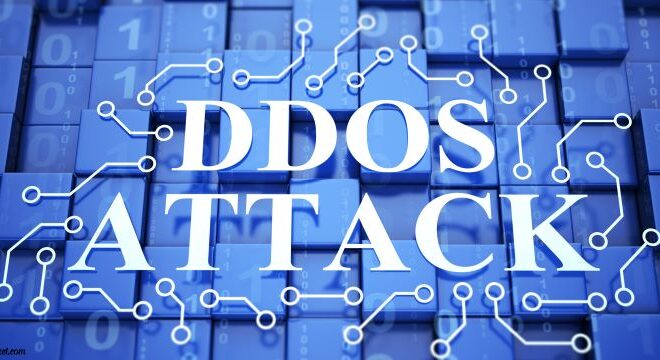
Stop Cyber Threats Before They Start: The Ultimate Guide to Vulnerability Management
Table of Contents:
- Key Takeaways
- Introduction to Vulnerability Management
- Identifying Vulnerabilities
- Assessing and Prioritizing Risks
- Developing a Remediation Plan
- Implementing Fixes and Patches
- Continuous Monitoring and Improvement
- Regulatory Compliance and Standards
- Training and Awareness
- Cloud and Third-Party Vendor Risks
- The Future of Vulnerability Management
Key Takeaways:
- Understanding vulnerability management is crucial for maintaining cyber resilience.
- Implementing a reliable workflow for identifying and mitigating vulnerabilities can significantly reduce risks.
- Continuous improvement and compliance with standards are key components of effective vulnerability management.
Introduction to Vulnerability Management
As businesses advance into a technology-driven future, their vulnerability surface expands exponentially. It is no longer a question of if an organization will face cyber threats but when and how severe they will be. This reality has intensified the need for a coherent vulnerability management workflow, a process streamlined and facilitated through tools for workflow automation to manage the complexities and frequent updates to these threats.
The bedrock of sound cybersecurity practice is an effective vulnerability management program, which delineates a series of well-orchestrated steps to identify, classify, prioritize, and remedy vulnerabilities continually. This routine protects data and systems and preserves a business’s trust and reputation. With the digitization of commerce and the surge in cloud computing, this workflow has become an integral part of business operations, necessitating a deep and nuanced understanding of cyber risks.
Identifying Vulnerabilities
The first order of business in vulnerability management is the proactive detection and reporting of potential security flaws. In an ideal world, organizations would have the capacity to scrutinize every byte of code for weaknesses. By deploying automated scanners and advanced diagnostic tools, companies can efficiently scan their digital environment for known vulnerabilities – a critical step that forms the foundation for subsequent security efforts.
While automated systems can carry much of the burden, they can only partially replace the human expertise required to interpret scan results and make strategic decisions. Security professionals must be adept at utilizing these tools and understanding the context of each vulnerability within their environment. This blend of automation and expert analysis ensures a comprehensive defense against cyber adversaries.
Assessing and Prioritizing Risks
Upon identifying potential risks, the next endeavor is to assess them meticulously. This process involves examining the nature of each threat, the systems potentially affected, and the potential fallout should an exploit occur. Prioritizing vulnerabilities is a task that requires insight and strategy. One must consider many factors, such as the severity of the vulnerability, the ease with which it can be exploited, and the value of the affected assets. Prioritizing ensures that vulnerabilities that pose the greatest threat are addressed first, optimizing resource allocation.
Developing a Remediation Plan
The creation of a remediation plan is essential to vulnerability management. The plan outlines actionable steps for addressing each identified vulnerability in order of priority. Seamless communication across departments ensures that everyone knows their specific roles in the remediation process. A best practice in developing a remediation plan is to have clear, accessible documentation detailing each step, enabling timely and coordinated action.
Implementing Fixes and Patches
Effecting change through implementing fixes and patches is a critical stage—where planning translates into action. The goal is to strengthen vulnerable points without disrupting established workflows. Hence, a tactical approach, including testing patches before a full-scale rollout, can mitigate the impact on productivity. This balance is crucial in maintaining operational stability while improving security posture.
Continuous Monitoring and Improvement
Complacency is the enemy of security. Ensuring that defenses remain robust involves an ongoing commitment to both surveillance and improvement. The cyclical nature of vulnerability management means that after addressing current vulnerabilities, the process begins anew—scanning, assessment, and remediation based on the latest threat intelligence. Lessons learned from previous incidents inform future defenses, creating a security posture capable of adapting to evolving threats.
Regulatory Compliance and Standards
Staying abreast of regulatory requirements and industry standards is critical for maintaining a diligent vulnerability management process. Compliance with standards such as the Payment Card Industry Data Security Standard (PCI DSS) and the General Data Protection Regulation (GDPR) is not just about avoiding penalties; it’s about protecting customers and ensuring the integrity and security of business operations. An effective strategy is to integrate these standards within the vulnerability management process, ensuring a compliance-first approach to security posture.
Training and Awareness
Even the most advanced technical safeguards can be undermined by human error. Investing in regular cybersecurity training and fostering a culture of security awareness can substantially impact an organization’s resilience to cyber threats. Such education enables employees to recognize and appropriately react to potential threats, thereby becoming an active component in the company’s security strategy.
Cloud and Third-Party Vendor Risks
The move to the cloud has brought about a host of new security considerations. With data increasingly stored off-premises and critical operations dependent on third-party vendors, the vulnerability management workflow must extend beyond the organization’s traditional boundaries. Establishing comprehensive contracts that specify security requirements and regular third-party risk assessments can help manage these new challenges effectively.
The Future of Vulnerability Management
Looking forward, the vulnerability management landscape will undoubtedly continue to evolve. Advances in AI and machine learning promise more sophisticated, predictive approaches to security, potentially identifying threats before they emerge. As the boundary between technology and security continues to blur, businesses must remain vigilant, adaptable, and informed about the changing dynamics of cyber threats.



